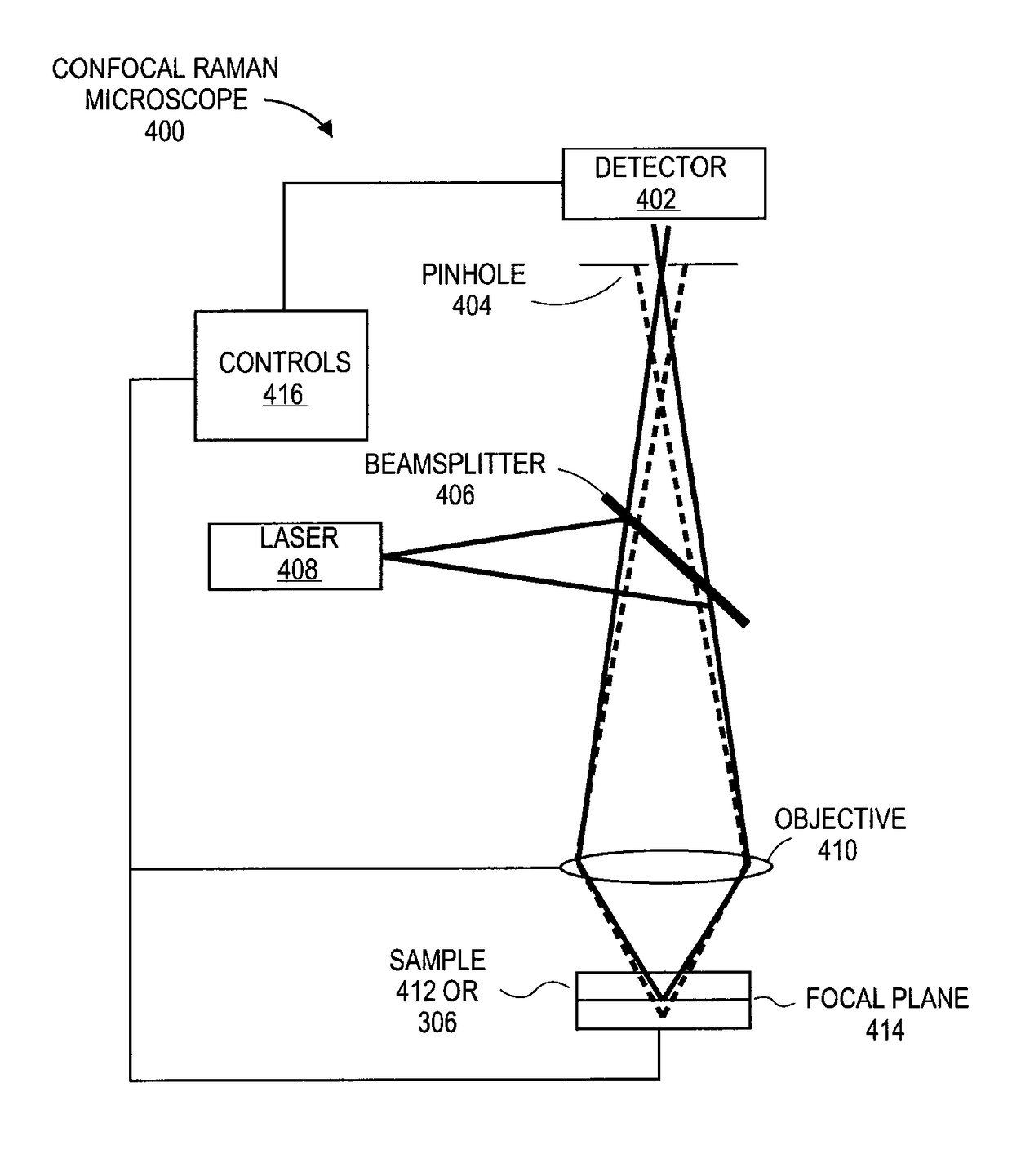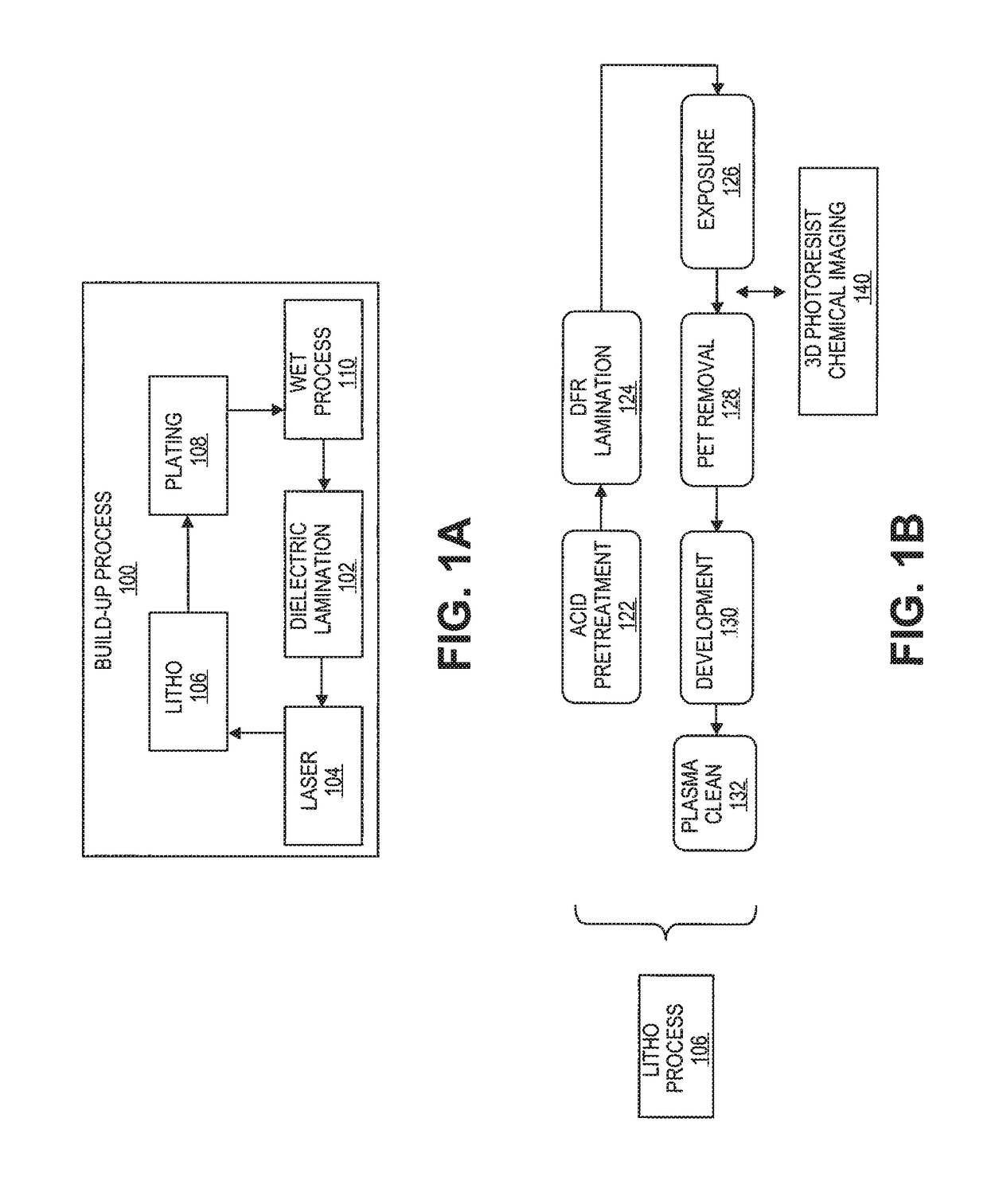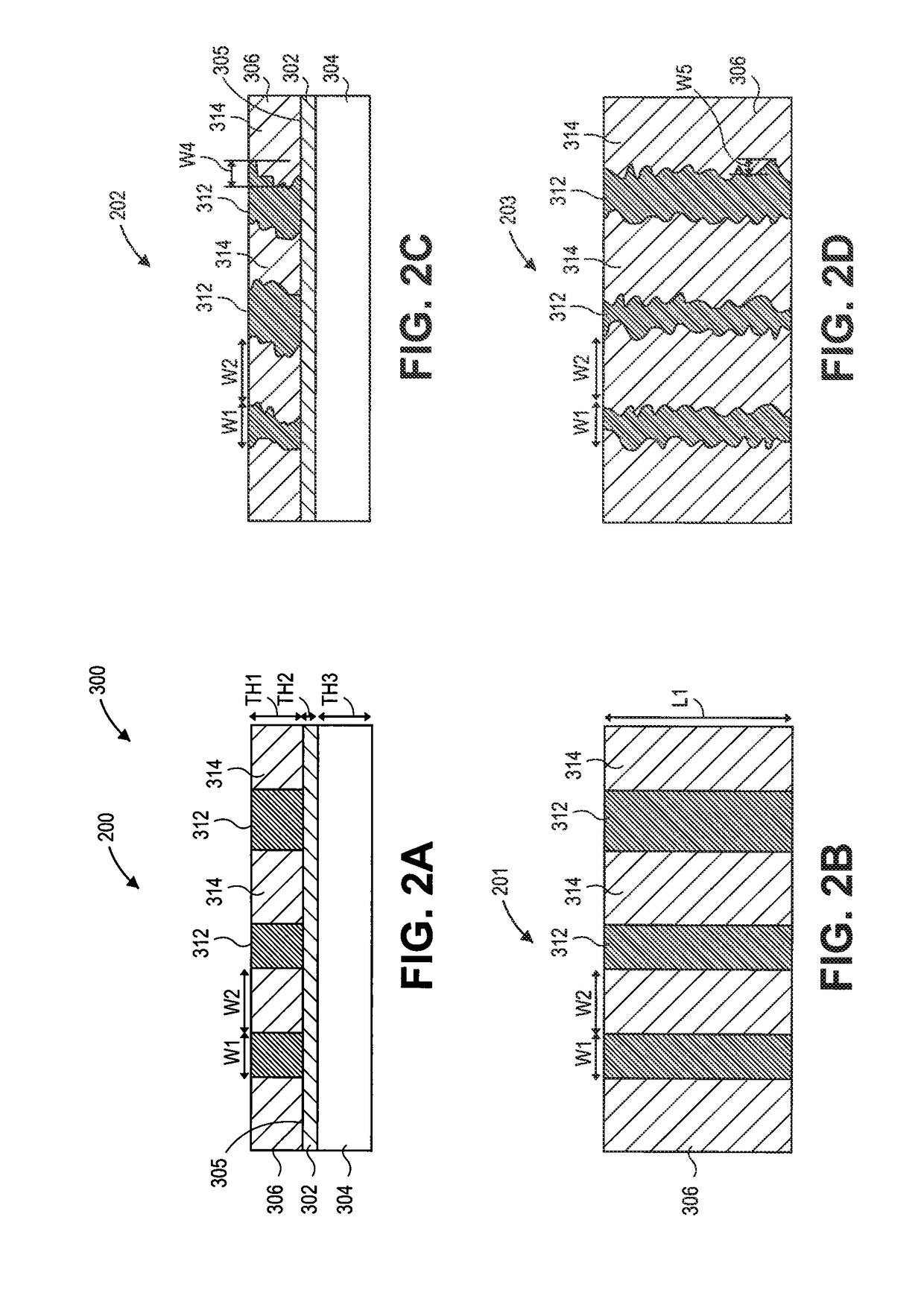Non-destructive 3-dimensional chemical imaging of photo-resist material
a photo-resist material, chemical imaging technology, applied in the direction of optical radiation measurement, instruments, spectrometry/spectrophotometry/monochromators, etc., can solve the problems of high yield loss in substrate package technology development (sptd) or bump-less build-up, and no solution exists in the industry for 3-dimensional (3d) imaging and quantitative characterization of photo-resist materials
- Summary
- Abstract
- Description
- Claims
- Application Information
AI Technical Summary
Problems solved by technology
Method used
Image
Examples
examples
[0092]The following examples pertain to embodiments.
[0093]Example 1 is a method for detecting defects in an border between exposed regions of a photo resist layer and unexposed regions of the photo resist layer comprising: inspecting the layer of photo resist with a confocal Raman microscope, wherein the resist is formed a conductive surface and includes borders between exposed regions of the photo resist layer and unexposed regions of the photo resist layer, wherein inspecting includes chemically identifing the borders between the exposed regions and unexposed regions.
[0094]In Example 2, the subject matter of Example 1 can optionally include, further comprising, prior to inspecting, exposing a layer of photo resist formed on a conductive surface to light to form borders between exposed regions of the photo resist layer and unexposed regions of the photo resist layer.
[0095]In Example 3, the subject matter of Example 1 can optionally include, further comprising, indentifying acceptab...
PUM
| Property | Measurement | Unit |
|---|---|---|
| wavelength | aaaaa | aaaaa |
| wavelength | aaaaa | aaaaa |
| wavelength | aaaaa | aaaaa |
Abstract
Description
Claims
Application Information
 Login to View More
Login to View More - R&D
- Intellectual Property
- Life Sciences
- Materials
- Tech Scout
- Unparalleled Data Quality
- Higher Quality Content
- 60% Fewer Hallucinations
Browse by: Latest US Patents, China's latest patents, Technical Efficacy Thesaurus, Application Domain, Technology Topic, Popular Technical Reports.
© 2025 PatSnap. All rights reserved.Legal|Privacy policy|Modern Slavery Act Transparency Statement|Sitemap|About US| Contact US: help@patsnap.com



